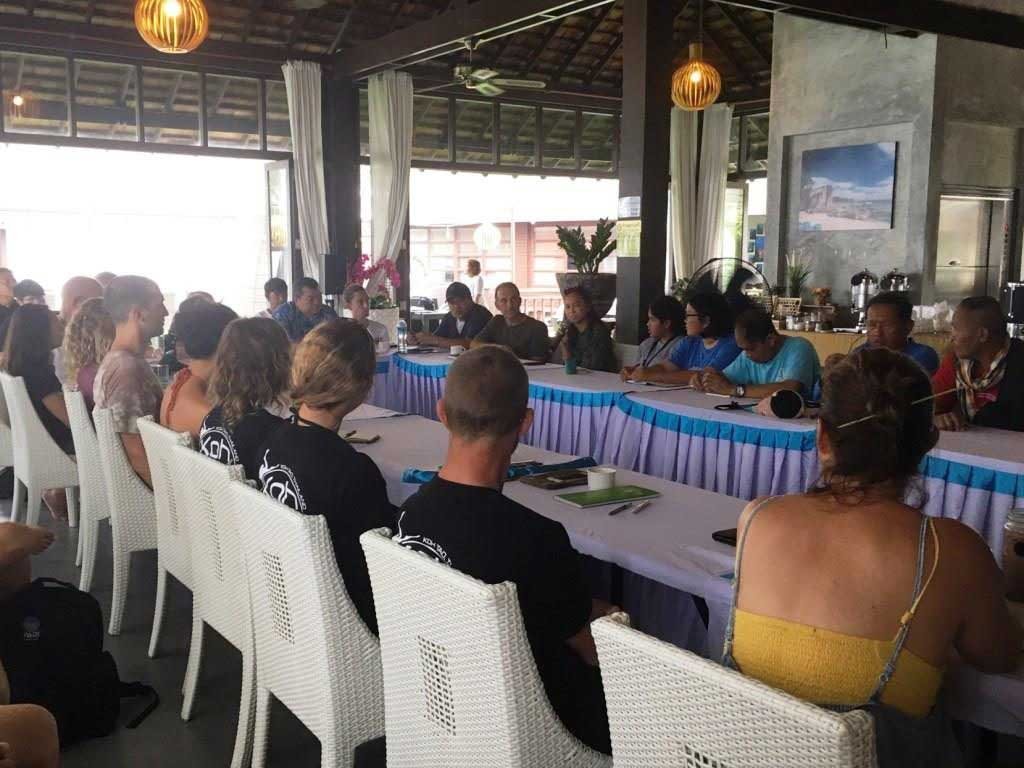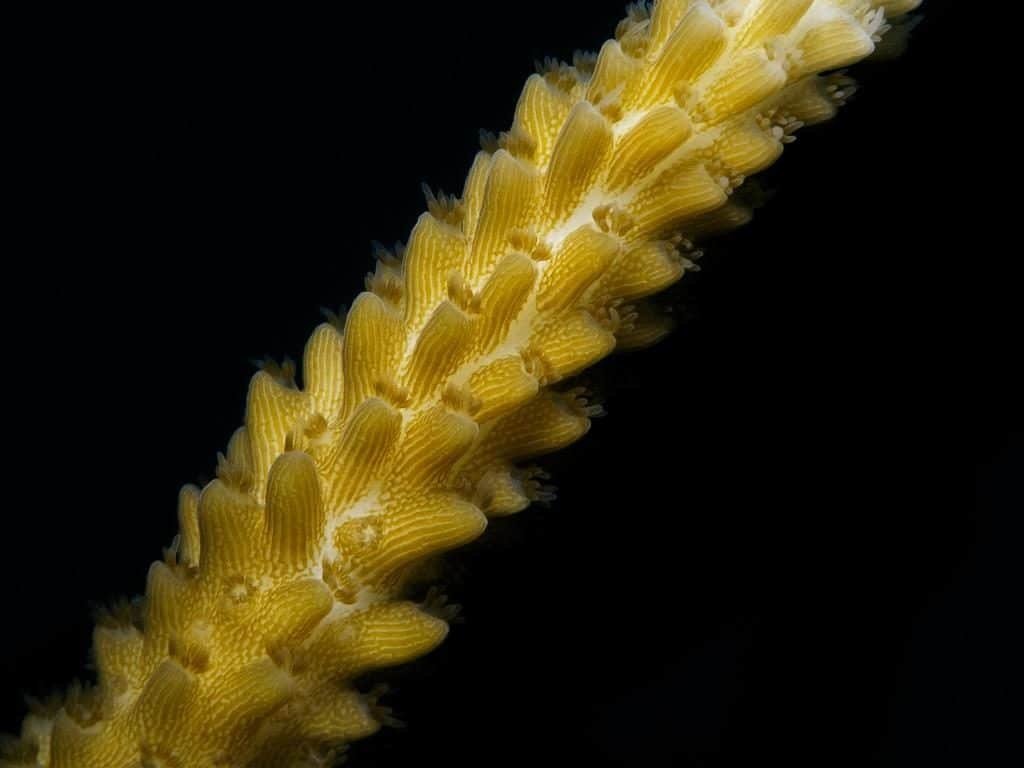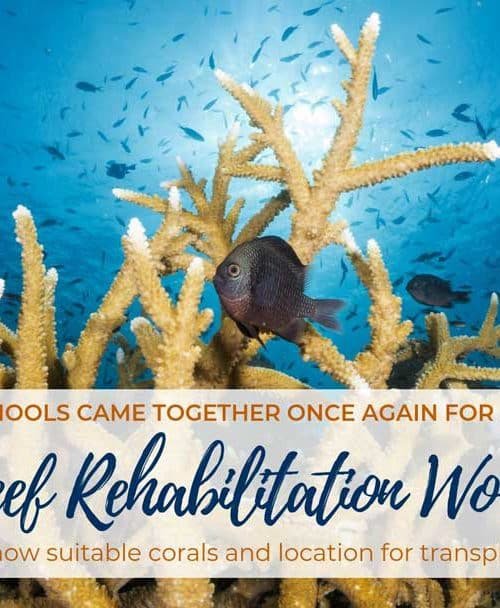A couple of weeks ago, Master Divers attended the second in a series of coral restoration workshops held by the Department of Marine and Coastal Resources (DMCR) and hosted by the Ban’s Conservation Learning Centre (BCLC).
Best practices for Coral Restoration
This two day workshop was led by the Director of the DMCR Conservation and Restoration Office Mr Pitul Panchaiyaphum. The remit of this office is to protect and preserve coral reef through various projects including artificial reef development and buoy line installation and repair. The focus of this workshop was on active restoration of the natural reef. Artificial reef were talked about briefly, and their benefit as a way to relieve pressure on the natural reef in high dive traffic areas was highlighted. For the purposes of these two days, we would concentrate on how to help the natural reef regenerate with the best success rate.

During the two days we learned a lot about coral growth and life cycles. We learned about how to select the most appropriate location for reef restoration to take place as well as how to select the best fragments for transplantation. During the first afternoon we went diving to survey the reef for good restoration locations and also to make some selections of suitable fragments that could be transplanted. Our second day was spent discussing how successful we felt the selection process was. We also discussed the various options that we could use to attach the coral fragments to the structure depending the shape of the corals. Finally we worked together to determine the best procedures and processes for coral restoration that will determine the nationwide operating standards that all coral restoration projects will need to follow.
The DMCR have some ambitious targets for reef restoration over the next year. Once the systems, standards and procedures have been agreed upon, Mr Pitun hopes to transplant 240,000 coral fragments into an area of reef totaling around 150 Rai – equivalent to 60 acres.
Koh Tao has a strong history of involvement in coral reef conservation and until now there have been many projects that have aimed to improve the overall health and condition of the reefs around the island. It was acknowledged that these projects have been initiated with the best intentions, and for the most part have been carried out with best practices. The legal status of coral as a protected species now not only covers the main growing structures, but also any fragments that have broken off. Therefore touching and collecting these fragments for reattaching is now technically illegal under Thai law. With this in mind, it was decided that now is a good point to initiate a coordinated restoration project covering many locations around Thailand. Now those interested in coral reef restoration will be able to submit a proposal to the DMCR for approval. Once their project has been approved, it will be monitored by the DMCR. Given Koh Tao’s strong history with coral conservation, it has been designated the test site for this project.

There is a lot of interest in helping with these projects, and many tourists who visit Thailand are also interested in helping with coral reef restoration. With this in mind we were also joined by a publicist who works with the Tourism Authority of Thailand to bring a group of 100 tourists to join a coral restoration project here in Thailand in December.
Our first task was to learn how to select the best site for regeneration. This part was led by Dr Nalinee Thongtham, a coral expert. It is important to consider factors both underwater and above the surface on land that may affect suitability. For example it is important that areas are not affected by heavy run off from rains that deposit sediment and coral-stressing extra nutrients into the area. Underwater we had to ensure the area was protected from waves and strong water movement so the fragments have the most stable conditions for growth. Other factors such as correct water temperature and light penetration are important to adhere to. We also had to ensure that the substrate is suitable. We are dealing with biological restoration where we are transplanting healthy coral fragments into the natural reef for them to help restore the existing reef area. Very exposed and heavily sanded areas are not as successful as protected reef where the fragments are sheltered from the main environmental stressors while they grow. In practice, once a suitable site has been found, that location is submitted to the DMCR for approval before any work can begin on the area. Once approval has been given, the DMCR will monitor all the projects to monitor their success and to ensure all work is done in accordance with he agreed.

Our second task on the afternoon dives was to learn how to select the suitable coral fragments that could be used for transplantation onto the restoration area. Since this is natural regeneration, we need to search for fragments from around the reef area as opposed to using ones that were grown in a coral nursery. There are several means by which these fragments are created:
- Waves & storms – Much are created through natural wear and tear on the reef from waves and storms.
- Marine life – Further fragments are made by marine life either feeding on the corals themselves or disturbed during hunting.
- Human activity – Finally, fragments can be created through human activity – for example boats dropping anchor or divers with poor buoyancy control who may accidentally damage the reef by swimming too close to the corals.
The most important factor when deciding which fragments are suitable, is to study their current condition. The healthier the fragment, the greater the chance of regeneration being successful. Key is that the zooxanthellae – the algae that lives inside the coral structure and provides the bulk of the energy for the coral – are still contained in the coral exoskeleton. Fragments that have hairy algae growing on them, or which have bleached are not suitable.
The second day was focused on reviewing of what we found on the dives, and how ways we found the selection process. We also discussed some of the techniques we can use to attach the fragments, depending on the natural size and shape of the structure. Options such as cable tie connection and using glue which we learned how to mix whilst on the dive in the first workshop were mentioned, but since the best techniques had already been practiced, we did not need to discuss further.
Following this workshop, and the sharing our experiences from the dives, the DMCR have a good idea of the sorts of procedures that will need to be followed. The next steps will be for the DMCR to collate our discussion and document the procedures to follow as well as setting out best practices and pre-requisites for participants. Once this is produced, the operation will be tested at Koh Tao before being formally rolled out across the whole of Thailand.

Overall it was a very interesting couple of days and we were excited to have been able to help shape Thailand’s policy and procedures on coral reef restoration for the future. Our thanks go to Ban’s for hosting the event, and to the DMCR and their many officers who travelled to Koh Tao to discuss this vitally important issue.

